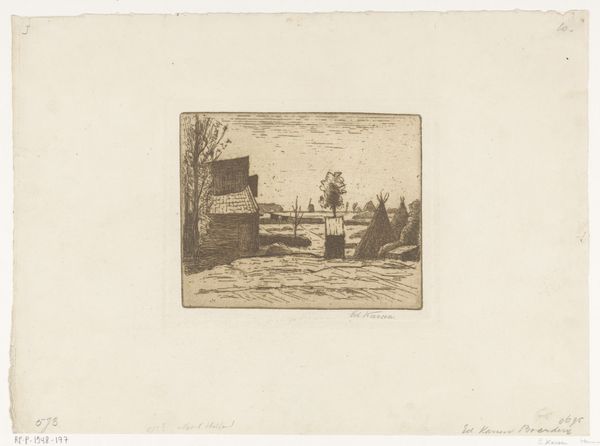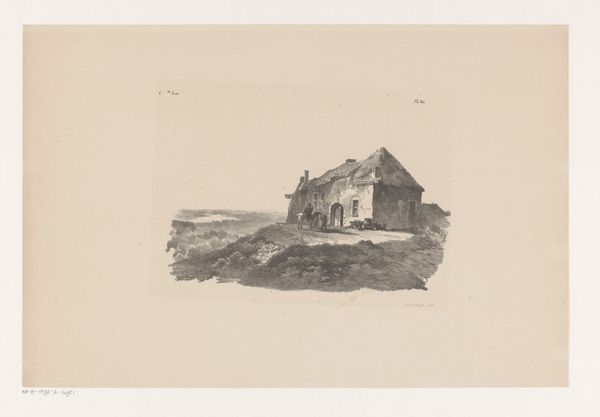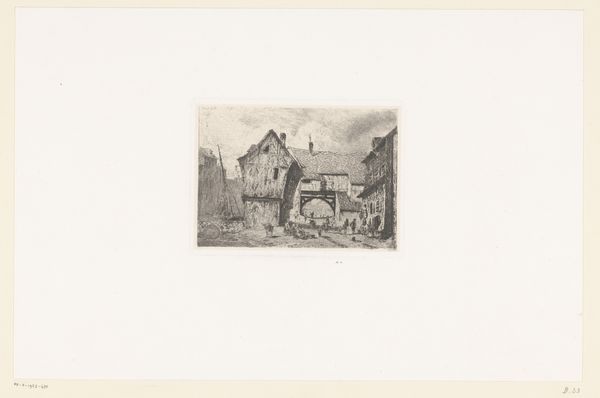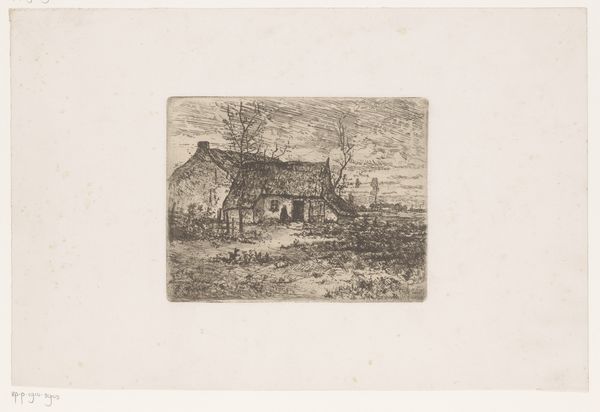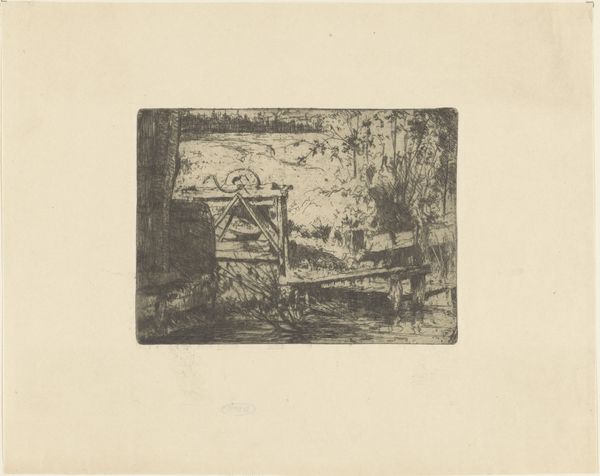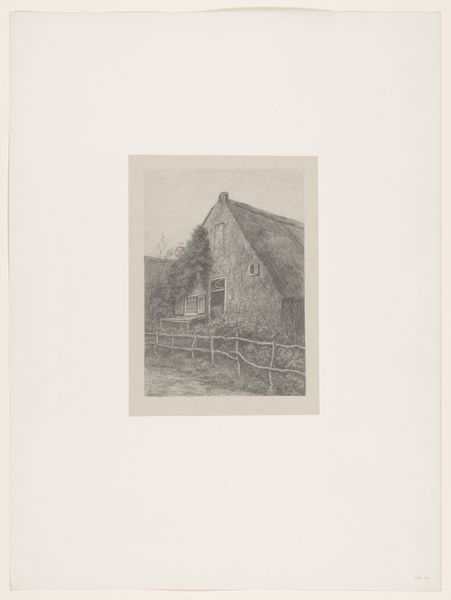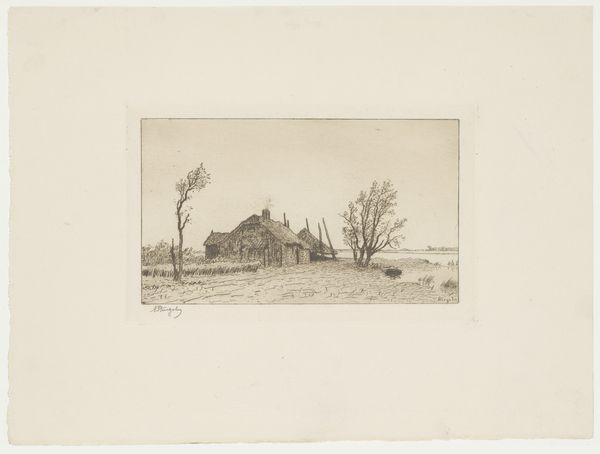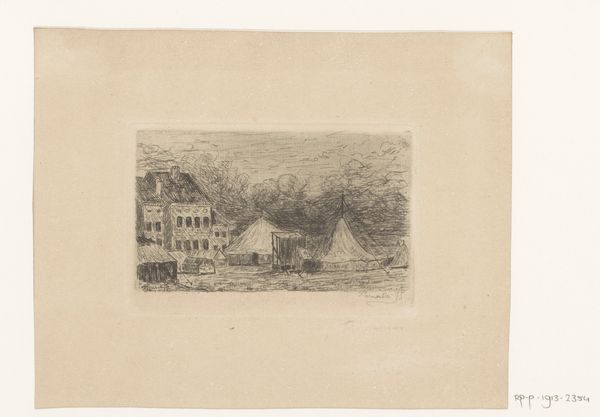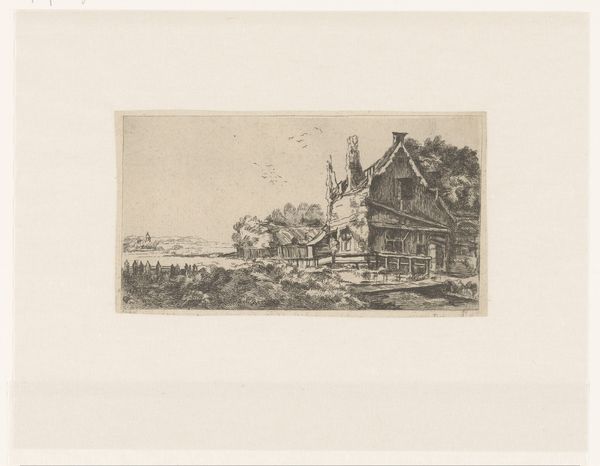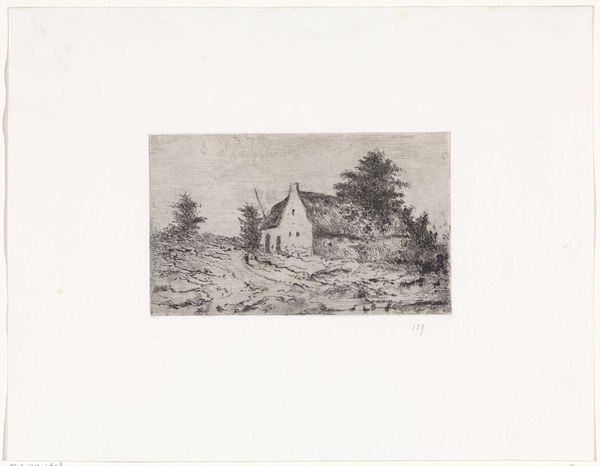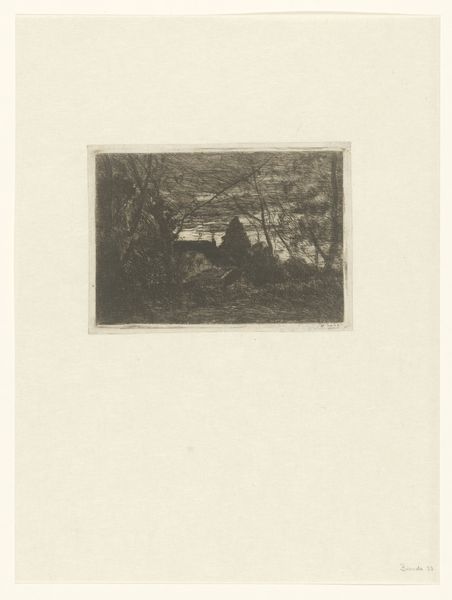
drawing, print, etching, ink
#
drawing
# print
#
etching
#
landscape
#
ink
#
ink drawing experimentation
#
pen-ink sketch
#
genre-painting
#
realism
Dimensions: height 60 mm, width 76 mm
Copyright: Rijks Museum: Open Domain
Curator: Welcome. We’re looking at Willem Adrianus Grondhout’s “Zoutelande,” a work held here at the Rijksmuseum. It was made sometime between 1888 and 1934. It is crafted with etching and ink on paper. Editor: It’s quite small and appears like an intimate sketch. The marks are so light and close together. There's a gentle sort of weight to the structures, the church particularly, that are looming over everything. I see that in the material roughness of the etching, like little bumps rising out of the paper. Curator: Indeed. It captures Zoutelande, likely in Zeeland, offering a glimpse into the provincial life and its spiritual core reflected in that looming church tower. One sees his adherence to realist depiction. Editor: Absolutely, the materiality reinforces that provincial life; etching, while reproducible, is fundamentally laborious. Look at the details etched within the work's houses. There is such material realism of ordinary life present here. Curator: Etchings gained immense popularity as an easily circulated medium. "Zoutelande," despite its realistic style, was made available for a broad audience, allowing the artwork to engage diverse viewers with common imageries. Editor: The means of production—the very labor involved in pressing the copper plate—allowed for widespread circulation, democratizing its accessibility. Even in monochrome and reduced scale, there's texture: thatched roofs and the coarseness of that simple wooden fence. You can feel that he is concerned about conveying how daily life and labor looked like. Curator: Right. It reminds us of how landscapes themselves became symbols within broader societal contexts, especially connecting place to community. Editor: Looking at this further, I would agree. This is an early photograph of material culture as a work, with labor rendered right there for anyone to see. Curator: Well said. It’s thought-provoking to examine the historical significance of an artist focusing their energies on provincial towns during these late-19th-early-20th century shifts in social life. Editor: Definitely. By focusing on materiality, “Zoutelande” reveals an immediate relationship between artist, subject, and society, through the very textures that are there. Curator: I see that your Materialist approach allows to consider how a simple landscape comes to life with its etched and inked texture, giving "voice" to the communities depicted. Editor: Yes, that’s an evocative note to consider. Thank you.
Comments
No comments
Be the first to comment and join the conversation on the ultimate creative platform.
